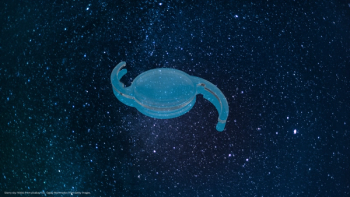
Interruption of the sharp optic edge of an IOL
The authors discuss their study evaluating and comparing the post-op PCO levels, anterior capsule retraction and ACO of two single-piece hydrophobic acrylic lenses.
The potential influence of this interruption of the optic edge at the haptic-optic junction on the presence of more or less ACO is something currently under debate and should be evaluated further to improve future IOL designs. For this reason, our research group performed a randomized, controlled, prospective and double masked study to evaluate and compare the 1-year postoperative levels of PCO as well as the level of anterior capsule retraction and ACO after cataract surgery with the implantation of these two single-piece hydrophobic acrylic IOL models.
The study was performed at the Hospital of St John of God in Vienna (Austria). A total of 74 patients with ages ranging from 61 to 80 years (mean age: 70.2 ± 9.3 years) and with bilateral senile cataract inducing a significant visual deterioration were enrolled. One IOL model (Acrysof or Tecnis) was implanted in one eye of each patient and the other model in the fellow eye by the same surgeon according to a randomization process. The surgeon was masked until implantation of the IOL. The IOL power implanted ranged from 14.5 to 26 D.
Four experienced surgeons performed all surgeries using the same surgical procedure, including the use of topical anaesthesia, a 2.75-mm clear corneal incision at 12 o'clock position and a well centred continuous curvilinear capsulorhexis with a 5-mm diameter. Postoperatively, patients were examined at 1 day, 1 month and 1 year after surgery. At the end of the follow-up, a complete ophthalmologic examination was performed including slit lamp biomicroscopy, applanation tonometry, fundus examination and intraocular retroillumination photography under pupil dilation. According to this photography, IOL decentration, anterior capsule fibrosis, glistenings and PCO were analysed. ACO was graded subjectively from 0 (slight) to 4 (severe). The EPCO (Evaluation of Posterior Capsule Opacification) software developed by Tetz et al.9 was used for PCO quantification. With this software, a PCO-score calculated as the product of the density of the opacification (graded from 0 to 4) and the fractional PCO area involved behind the IOL optic (pixel counts) was obtained for each eye.
Newsletter
Get the essential updates shaping the future of pharma manufacturing and compliance—subscribe today to Pharmaceutical Technology and never miss a breakthrough.













































